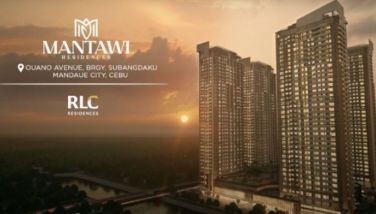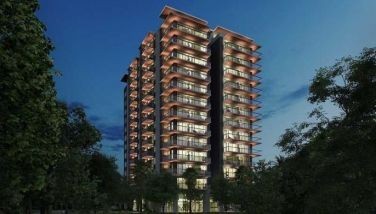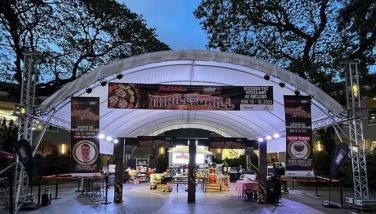River revival

Before the pandemic lockdowns, I took the Pasig River ferry with two colleagues, from the “Escolta” station in Manila (it’s actually behind the Bureau of Immigration in Intramuros) to Guadalupe in Makati.
We were all pleasantly surprised that the ride was enjoyable. There was no sewer stink at all, there were no waterlilies to block the way, and the strong breeze made the ride comfortable even without air conditioning. We enjoyed the sight of many aquatic birds, with some flying close to the ferry.
Pasig water quality of course has a long way to go; I may not see fish thriving in the river in my lifetime. But the river was generally free of solid garbage. We didn’t spot any floating cadaver, which used to be a regular sight in the river.
The ferry service merits expansion, to augment mass transport in Metro Manila. And it would be great if the Inter-Agency Council for the Pasig River Urban Development created last week would actually attain its goal of reviving the river and transforming the riverfront areas.
Officials in other countries have told me that they managed to clean up and revive what we would describe as dead rivers, and develop riverbank areas into thriving spots for leisure, arts, entertainment and commercial activities. In many countries, real estate properties with views of water and greenery are among the most expensive.
These are mostly advanced economies, however, with not only vast resources for the rehabilitation of rivers and other bodies of water, but also the expertise and governance capacity plus the right ideas for creating livable, sustainable communities.
Even in less affluent countries, however, rivers are used not only for mass transport but also for tourism. Thailand is a prime example. There are over a dozen “floating markets” around the capital Bangkok alone, and all are popular tourist draws. Water in the rivers are mostly a murky, muddy brown. But the water quality is touted by locals as rich in minerals from the muddy riverbed.
Vietnam and Indonesia also have floating markets. With so many rivers all over our archipelago, it’s interesting that we don’t have a floating market. Maybe because many of our rivers and creeks are clogged with garbage and reek of sewage, becoming breeding grounds for mosquitoes and creepy-crawlies. Also, rivers and other waterways often burst their banks and flood surrounding areas. So riverbank properties are not considered as prime real estate.
* * *
The inter-agency council created under Executive Order No. 35 hopes to change this. Specifically, the EO provides that the Pasig riverbank development will entail the relocation of informal settlers, and the enforcement of easement rules.
Good luck doing this.
Anyone familiar with the Pasig riverbanks in the city of Manila alone will see the challenge here. Informal settler communities constitute the voting base of many local politicians. Barangay officials, who serve as grassroots leaders of the politicians, may themselves live in slum communities, or are the biggest landlords in such settlements.
Yes, those shanties are rented out, and you’d be surprised at the high rates. They are prized for their proximity to commercial and industrial areas where there are many jobs available. It’s not easy to dismantle such informal settlements.
In some areas, structures built along the riverbanks are properties of the barangay.
Local governments along the Pasig may take tips from the Villars. In their various capacities in government, the family developed riverside roads in their home turf of Las Piñas that have contributed to easing traffic in the city.
Sen. Mark Villar, when he was public works secretary, told us on One News’ “The Chiefs” that the city government invested in just compensation for properties affected by riverside development, to quickly resolve right-of-way issues.
* * *
President Marcos, with his immense popularity, can invest some of that political capital to get things done – if he is genuinely bent on seeing his newly created inter-agency council succeed.
If the government deals decisively with that basic problem, it will be easier to get the private sector to cooperate in stopping river pollution, and even help in the regular cleanup of the river.
Members of my parents’ generation remember the days when people could still swim in the Pasig River. Media oldtimers say the late senator Blas Ople, when he was still a journalist, swam across the river following a drinking binge at the National Press Club.
There were no follow-up stories of Ople catching germs and getting sick after his swim, indicating that the river was still relatively clean at the time.
These days, if you fall into the river and accidentally ingest some of the water, you could die either from the toxic industrial sludge, or of cholera from the sewage.
The sewer stink often wafted to the Malacañang complex on both sides of the Pasig, but this was when I was still part of the brat pack covering the presidency.
I don’t know if the stink is still there today, with the river now being cleaned up regularly. But Malacañang will be a major point of interest in any Pasig ferry service designed for tourists. Such rides are popular in many countries. For visitors in Metro Manila, a river tour can be more convenient than the hop-on, hop-off tourist bus in the traffic-choked streets.
But first, the riverside areas, particularly those with points of interest, will have to be developed. Public expectations will need management here. Simply clearing the riverbanks to conform with easement regulations will be an uphill battle.
- Latest
- Trending




























